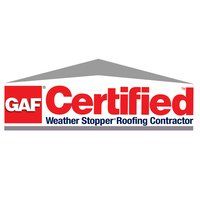Roof Inspections
Book Now! Schedule is Filling Fast!
SUMMER PRICING Now Available
Helping You to Determine if You Need Roof Repair or Replacement
If you think you need a new roof or repair, contact Dirickson Creek Construction and we'll come take a look. We serve residential and commercial customers with flat, rubber, asphalt, shingle and cedar roof systems. Below are some inspection tips.
Inspect Your Roof with the I.O.U. Method
Don Kilcoyne, March 15, 2018
As homeowners, many of us see the end of a heavy storm as our cue to head outside and clean up the yard. We stand the garbage cans back up, clear fallen branches and make sure our trees, shrubs and gardens haven’t taken a beating.
It’s important to remember that the worst storm damage isn’t always the easiest to see. You may have to go looking for it. During storm season, be prepared to inspect your roof periodically. The earlier you identify roof damage, the sooner you can contact a qualified roofing contractor to provide necessary repairs before the next storm rolls in.
Not sure what to look for? Just use the I.O.U. method:
Inside,
Outside,
Up the ladder.
Inside:
Begin in the attic if it’s accessible and do your check during the daytime. Use a flashlight wherever necessary.
Send Us a Message
Look For
Sunlight showing through the plywood
Possible Causes
Holes in the deck
Urgency
***
Holes are serious causes of leaks and water damage.
Dark stains or streaks
Moisture from rain or poor ventilation
*
Speak with a qualified roofer to determine the cause.
Sagging
Weakening of the deck, from moisture
***
This can be a sign of a structural problem and should be looked at by a qualified roofer.
Outside: Walk around your house, examining as much of the roof as you can see from the ground for signs of damage, like these:
Look For
Missing shingles
Possible Causes
Wind damage
Urgency
***
Missing shingles should
be replaced as quickly as possible.
Cracked or curled shingles
High winds or flying debris
**
Speak with a qualified roofer to determine if a repair or reroof is best for your home and budget.
Dark patches
Granules have come off of the shingle
*
Granules protect the underlying asphalt from weather, including UV rays. Without them, the shingle may dry out and crack.
Debris
High winds
?
A branch on the roof may not be a big deal at all, or it may be covering a crack that it caused as it landed. Either way, over time, it can rub the granules loose from your shingles, so it's important to keep your roof clear of debris.
Bent or detached flashing
Flying debris
**
Flashing helps keep water from chimneys, vents, and other roof penetrations and should be thoroughly sealed to prevent water intrusion.
Up the ladder: If you are comfortable climbing a ladder and the weather conditions allow you to do so safely, you can get a better look at your roof up close. Look for:
Look For
Loose nails
Possible Causes
Wind
Urgency
***
Loose nails or nail heads raised above the shingle surface may be just one storm away from letting go entirely.
Gutter debris
Wind
**
Clogged gutters can contribute to ice dams later in the year. Your roofing contractor may provide gutter cleaning services if you are not comfortable doing the job yourself.
Climb safely or not at all: When using a ladder, remember the three-point rule: keep two hands and one foot, or two feet and one hand, on the ladder at all times. Keep ladders — and yourself — away from power lines.
Remember: wet branches conduct electricity, too. If you are not completely comfortable using a ladder, wait for a professional. For more in-depth roofing safety information, visit
OSHA or the
National Roofing Contractors Association.






Share On: